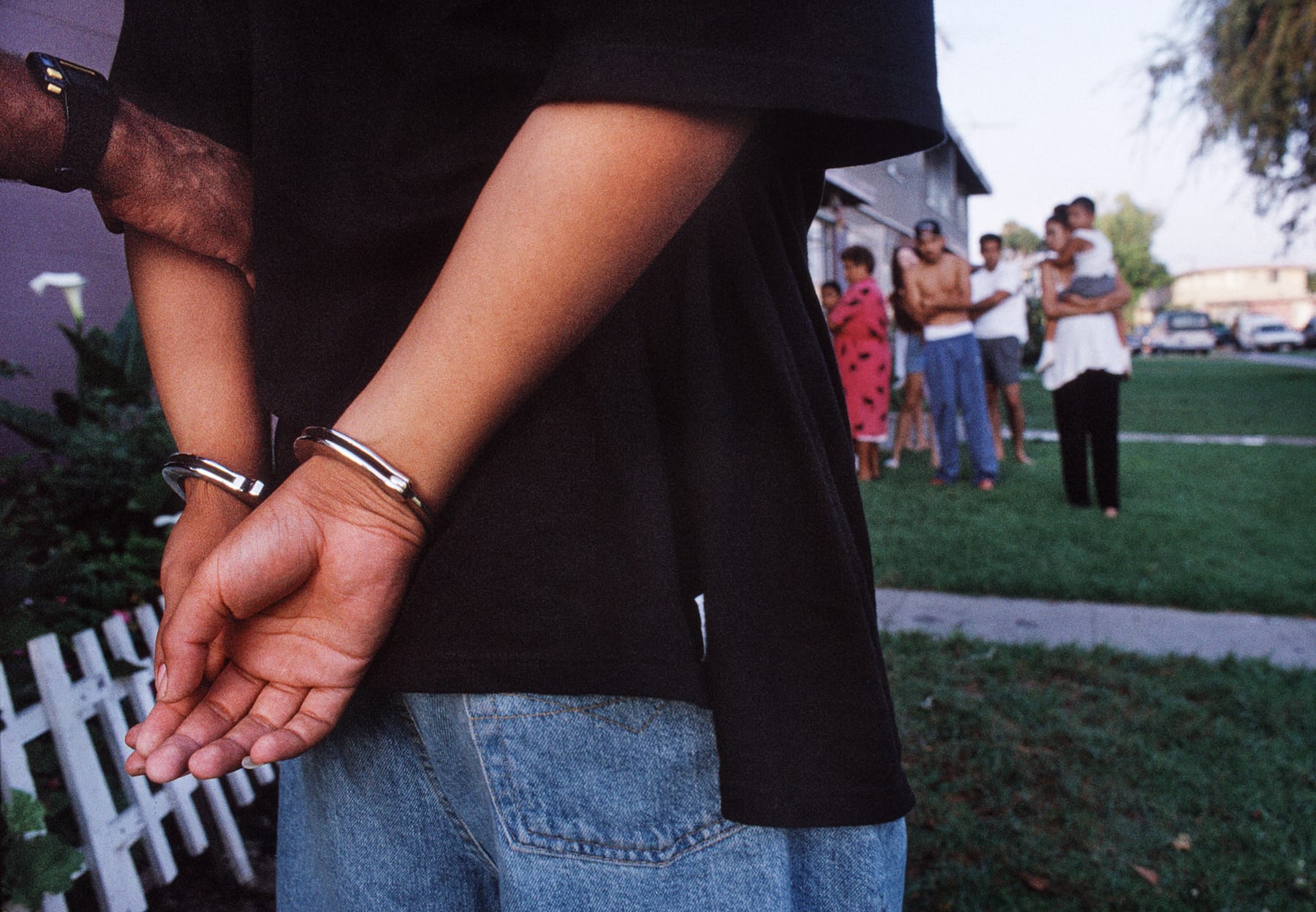Joseph Rodríguez’s life in New York shaped the images he would go on to make
Parts of Rampart Division uniform © Joseph Rodriguez.
Source:
Los Angeles police officers (Rampart division) are feeling the heat from all sides: from the mayor, from their superiors and from citizens like this man, who was assaulted by gang members and complained about the lack of police protection. This is the original caption that ran in NYT Magazine, 22 January, 1995 © Joseph Rodriguez.
Source:At an abandoned Westlake motel near Skid Row, de facto living quarters for dozens of people without homes, CRASH (Community Resources Against Street Hoodlums) Unit officers search for a murder suspect © Joseph Rodriguez.
Source:© 2022 - 1854 MEDIA LTD